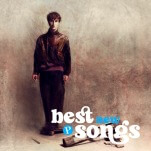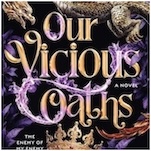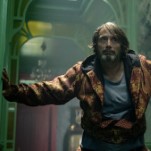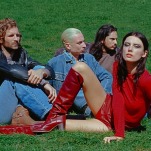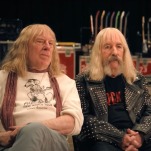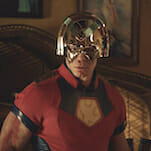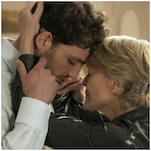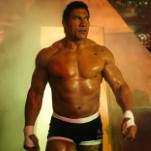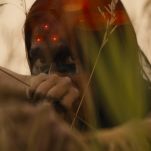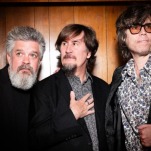The Best Fantasy Book Series of All Time

Some readers equate fantasy with hobbits and magic wardrobes. Others conjure images of a wizard P.I. in Chicago or a gunslinger in a magical Wild West. And that is the beauty of the genre.
Fantasy thrives on the creation of new worlds, species and magic systems. It allows for the impossible to occur—for elves to fall in love with humans and for street urchins to wield magic. Fantasy introduces readers to adventures starring world-conquering villains and selfless heroes (or, sometimes, tender-hearted villains and amoral heroes). In short, fantasy is a genre of epic strength and incandescent beauty.
To celebrate the heritage of the genre, we’ve assembled a list of some of our favorite fantasy series of all time. Enjoy reading our selections (listed in alphabetical order by series title).

 The Black Company by Glen Cook
The Black Company by Glen Cook
First Book in the Series: The Black Company (1984)
Description: Good fantasy tales rely on world building, and Glen Cook’s Black Company series has this in spades. The tales cover more than 400 years of rich history across the 10 novels, three sub-series and plenty of short stories that followed. Though a series’ title isn’t always telling for literal descriptions of the adventures within, The Black Company couldn’t be a better fit; the collection mulls morality within a group of hired mercenaries in a multi-dimensional world of wizards and magic. Aside from fantasy aficionados, Cook found an eager audience in real-life soldiers, too, who embraced The Black Company’s more true-to-life portrayal of mercenaries handling life within their chosen profession. —Tyler R. Kane

 The Broken Empire Trilogy by Mark Lawrence
The Broken Empire Trilogy by Mark Lawrence
First Book in the Series: Prince of Thorns (2011)
Description: Mark Lawrence’s Broken Empire Trilogy wraps a war epic around a family drama within a coming-of-age story, creating a multi-layered fantasy series steeped in dark magic. Physically and emotionally scarred after watching the murders of his mother and brother, Jorg Ancrath, the titular “Prince of Thorns,” transitions from a tortured child to a callous leader vying for the throne. Beyond delivering memorable (if sometimes vicious) characters, Lawrence’s trilogy presents the all-too-common “teen fighting to unite the land” storyline with a twist: this protagonist won’t hesitate to leave a trail of corpses in his wake. —Frannie Jackson

 The Chronicles of Narnia by C.S. Lewis
The Chronicles of Narnia by C.S. Lewis
First Book in the Series: The Lion, the Witch and the Wardrobe (1950)
Description: C.S. Lewis’ kindhearted Narnia series sometimes feels like the yang to Tolkien’s serious and moody yin, which makes sense, given that the two Inklings were close friends for decades. Lewis’ series, though, is too often reduced to the child-friendly The Lion, the Witch and the Wardrobe. It’s the other entries that feel more epic and filled with heraldic magic, such as the high-seas adventure and beautiful vistas of Voyage of the Dawn Treader, or the wondrous moments of Narnia’s birth in The Magician’s Nephew. The way time passes so quickly in Narnia vs. our own world also infuses the series with a gentle but persistent sense of remorse; constant reminders that all things are impermanent. Even the great empires of our heroes in one entry are all swept away by the time we reach the next, ultimately showing us many sides of the land of Narnia. —Jim Vorel

 The Chronicles of Prydain by Lloyd Alexander
The Chronicles of Prydain by Lloyd Alexander
First Book in the Series: The Book of Three (1964)
Description: In an age when any successful tween series is hyped as a potential film franchise, Lloyd Alexander’s pentalogy has managed to stay out of the limelight (Disney’s unfortunate 1985 film The Black Cauldron notwithstanding). Soaked gently in Welsh mythos without being beholden to it, this coming-of-age tale of Assistant Pig-Keeper Taran and his friends tells a story that’s both high fantasy and touchingly human. As a result, the series is a great introduction to the genre, as Taran, Eilonwy, Flewddur Fflam, Gurgi and Doli are characters who will hold their own in the reader’s memory alongside famous hobbits and talking lions. —Michael Burgin

 The Chronicles of Thomas Covenant by Stephen R. Donaldson
The Chronicles of Thomas Covenant by Stephen R. Donaldson
First Book in the Series: Lord Foul’s Bane (1977)
Description: Though Stephen R. Donaldson’s trilogy is undeniably derivative of Tolkien (an immensely powerful ring, staff-wielding magic users, an unseen foe of supreme malevolence, etc.), the writer pulls one of the greatest switcheroos of reader loyalty seen in fantasy: its protagonist is one of the most grating main characters to ever anchor a series. Granted, Thomas Covenant has reasons to be unpleasant: leprosy sucks. But since it’s on this list, Donaldson’s trilogy obviously has plenty else going for it—the Bloodguard and some amazing battles, not the least. Yet loving The Chronicles of Thomas Covenant is about loving the Land. It’s a world where the relationship between people and stone and wood and animals is depicted with a richness that makes you care for it deeply. With The Lord of the Rings, you root for the hobbits, for Aragorn and Gandalf and Gimli and Legolas. But you don’t root for Thomas Covenant. Instead, you root for the Land and against the forces that threaten it. It just so happens that this self-loathing leper seems, inescapably, the best hope to defeat Lord Foul and company. —Michael Burgin

 The Dark Elf Trilogy by R.A. Salvatore
The Dark Elf Trilogy by R.A. Salvatore
First Book in the Series: Homeland (1990)
Description: Role-play gaming and fantasy novels have gone hand-in-hand for most of their existence, but it’s a path that can be dangerous for casual fans to explore. On one hand, the game-based fiction provides an otherwise impossible immersion to such a world. On the other, it can be a painful slog through clumsily written fantasy fiction. Thankfully for fans of Dungeons and Dragons’ Forgotten Realms sector, that’s rarely been an issue. R.A. Salvatore’s contributions to Forgotten Realms are some of the series’ most beloved, and among its best titles is The Dark Elf Trilogy, which brings the vibrant history of elf Drizzt Do’Urden to life. This is one of the rare instances where a series such as this one reached mass audiences; the final tale, Sojourn, turned heads with a spot on the New York Times bestseller list. —Tyler R. Kane

 The Dark Tower by Stephen King
The Dark Tower by Stephen King
First Book in the Series: The Gunslinger (1982)
Description: You probably associate Stephen King’s name with another brand of genre fiction, but that’s no reason to discount his forays past traditional horror. With The Dark Tower, King masterfully blends dark fantasy, western and horror across eight tales, which were released between 1982 and 2012. The story’s Wild West-esque environment might not appear to be the ideal landscape for fantasy, but the trials and travels of its main character, the Gunslinger, are more Lord of the Rings than Clint Eastwood. And though fans have different opinions on the best installments within the series, its continuity and whether it will receive the film adaptation it deserves, The Dark Tower series has proven worthy of its decades-spanning discussion. —Tyler R. Kane

First Book in the Series: The Colour of Magic (1983)
Description: Terry Pratchett was a voice sorely needed in the regal, sonorous fantasy genre, where so many authors have imagined themselves as the next Tolkienesque figure. That wasn’t for Pratchett, whose Discworld books imagined what might happen if the characters of an ostensibly high fantasy-type universe grew up a little, only to develop thoroughly modern foibles and anxieties. By transferring much of the action to the stinking, grimy underbelly of an industrial-era city, Pratchett gave us answers to fantasy questions that no one had even thought to ask—i.e., what kind of menial city labor is appropriate for trolls? The sprawling comic mythology of the series simultaneously highlights different ends of the Disc continent while returning time and time again to persistent groups of beloved characters hailing from different tiers of the social strata—The City Watch, the Witches, the inept wizard Rincewind, the devious Patrician of the city, etc. Pratchett’s comedy is rooted in absurdism, and each entry combines real character-building with an outside threat that ultimately builds to a madcap conclusion with universe-wide consequences. —Jim Vorel

 Dragonriders of Pern by Anne McCaffrey
Dragonriders of Pern by Anne McCaffrey
First Book in the Series: Dragonflight (1968)
Description: Great fantasy writing teases the imagination, and I still remember the feeling of reading those first Pern books as a child—the wonder of dragons who bonded with their riders through telepathic communication was almost too much to bear. There was no vocation on this earth more enticing than to protect my world from the plague of Thread while mounted on my fire-breathing steed and best friend. But I would have settled for becoming a harper like Menolly, writing songs with telepathic fire-lizard pets to keep me company. Anne McAffrey found endless stories to tell in her land of dragons, enough to fill 22 novels and two collections of short stories, but her first two trilogies remain classics today. —Josh Jackson

 The Dresden Files by Jim Butcher
The Dresden Files by Jim Butcher
First Book in the Series: Storm Front (2000)
Description: Hard-boiled detective fiction set in Chicago with a wizard cast as a PI? The premise for Jim Butcher’s immensely popular series has to be one of the biggest “Why didn’t I think of that?!” combos since the birth of the Reese’s Peanut Butter Cup. The mash-up of two well-established pulp genres gives Jim Butcher’s stories a prefab structure that fans of both fantasy and detective noir can immediately recognize—even as it allows the author to skip some of the more onerous aspects of world-building and get right to the action, all the while polishing the very tropes and clichés he used to get a head start. The result is a pulp series that feels both modern and retro, and which, like any good pulp series, has ample content (15 novels and one anthology) for all your bingeing needs. —Michael Burgin

 The Earthsea Cycle by Ursula K. Le Guin
The Earthsea Cycle by Ursula K. Le Guin
First Book in the Series: A Wizard of Earthsea (1968)
Description: The Lord of the Rings gets extensive head-nods in the fantasy world, but another title that tackled massive world-building (and influenced writers like Neil Gaiman) was Ursula K. Le Guin’s Earthsea Cycle. The series’ six titles, which were published between 1968 and 2001, dived into an archipelago that strayed happily from our own world. We may immediately think of wizarding education in J.K. Rowling’s Harry Potter series, but many point to its origin in Earthsea. The series follows a young mage through the daunting task of bringing balance to the world of magic—a theme that American moviegoers are well aware of in 2016. To this day, Le Guin’s influence is a strong pulse in the ever-evolving fantasy world. —Tyler R. Kane

 The First Law Trilogy by Joe Abercrombie
The First Law Trilogy by Joe Abercrombie
First Book in the Series: The Blade Itself (2006)
Description: Fantasy is a genre that depends on reliable world-building, but fans of Joe Abercrombie’s First Law Trilogy hoist its titles high for another reason: superior characterization. Though promises of barbarians, wizards and multi-territory conflicts should be enough to engage readers, First Law fans delight in scenarios that see their protagonists not only excel at the labels they’re given, but indulge in their worst behaviors. The first installment, The Blade Itself, explores a broad, world-worn cast: a military officer, a barbarian, a man with magical properties and a torturer. Within his three novels, Abercrombie unravels a world through the eyes of deeply flawed characters, crafting more emotionally engaging stories as a result. —Tyler R. Kane

 The Gentleman Bastard Sequence by Scott Lynch
The Gentleman Bastard Sequence by Scott Lynch
First Book in the Series: The Lies of Locke Lamora (2006)
Description: The Gentleman Bastards, led by professional thief Locke Lamora, prove that gloriously three-dimensional characters can exist within a rich fantasy world, adding depth to the setting rather than existing in spite of it. Throughout Scott Lynch’s three published books (with four more to come), Locke and his friends have consistently undertaken cons and heists so astonishing—yet believable—that fans of Ocean’s Eleven and Patrick Rothfuss alike will find their adventures ridiculously entertaining. With the Gentleman Bastard Sequence, Lynch reminds us that fantasy is an absolute joy to read. —Frannie Jackson

First Book in the Series: Harry Potter and the Philosopher’s Stone (1997)
Description: What began as a children’s series about an orphaned boy whisked away to a magical school developed into one of the most beloved book franchises of all time, turning its then-unknown author into a billionaire. But forget the movies, the theme parks, the college Quidditch teams and the ubiquitous halloween costumes. None of that would exist if this coming-of-age story, told over seven novels, wasn’t so completely enchanting. J.K. Rowling’s wizarding world is so well developed—and her characters so lifelike—that legions of fans abandoned work, social interaction and even sleep every time a new entry was released. It earned its place alongside the giants of the fantasy genre with gripping tales about the boy who lived. —Josh Jackson

 His Dark Materials by Philip Pullman
His Dark Materials by Philip Pullman
First Book in the Series: The Golden Compass (1995)
Description: Between Nine Inch Nails’ landmark Further Down the Spiral tour, the fundamentalist-skewering film Se7en and Philip Pullman’s The Golden Compass, it’s safe to say Christianity and the mainstream media weren’t huge friends in 1995. But unlike the disturbing exploitation of the first two head-turners, Pullman’s fantasy masterwork tackled its philosophical adversary with intelligence and staggering imagination. The Golden Compass—or Northern Lights as it’s known in Pullman’s native England—set off a trilogy following a young girl named Lyra as she adventured through multiple universes with a device that could answer any question. Pullman’s world(s) building is intoxicating, concocting a reality where children manifest souls as animal companions before the Magesterium severs their bond, rendering the kids as inert slaves. The fact that The Boston Globe would uncover a far more insidious parallel of this scenario seven years later speaks to a relevancy that a blockbuster film adaptation couldn’t hope to achieve. But as Lyra attempts to liberate the multiverse from theological rule, His Dark Materials pulls off a monumental accomplishment: enchantment and provocation in equal turn. —Sean Edgar

 The Kingkiller Chronicle by Patrick Rothfuss
The Kingkiller Chronicle by Patrick Rothfuss
First Book in the Series: The Name of the Wind (2007)
Description: With only two books published relatively recently (and a related novella), it could be argued that the unfinished Kingkiller trilogy doesn’t belong on this list. But only someone who hasn’t read these books would make that argument, as no other fantasy novels so easily shrug off their genre tag with such gorgeous prose. Kvothe’s tale is not an epic hero journey. Told as a regretful autobiography by a secluded innkeeper, it’s a life lived large, filled with magic and adventure, sure, but also with love, music and the trials of a poor student just trying to survive until the next meal. There is no book I’m more excited to read (The Winds of Winter included) than the final entry of this series. And along with the strange and lyrical novella, The Slow Regard of Silent Things, there are no other books I would recommend more to someone wanting to dip their toe into fantasy waters. —Josh Jackson

 The Lord of the Rings by J.R.R. Tolkien
The Lord of the Rings by J.R.R. Tolkien
First Book in the Series: The Fellowship of the Ring (1954)
Description: J.R.R. Tolkien spent a dozen years building the world of Middle Earth between The Hobbit’s publication and the completion of Frodo’s epic journey to Mordor in The Return of the King. Every location the Fellowship encountered possessed a rich history and language, showcasing songs and poetry and mythology that always spoke of more beyond the page. But it was the four simple hobbits, bravely facing a world far larger and darker than their home in the Shire, that made every strange encounter relatable. Fighting orcs and spiders and worse, there was a nobility inverse to their size and a struggle between good and evil that resonates 62 years later. —Josh Jackson

 The Magicians Trilogy by Lev Grossman
The Magicians Trilogy by Lev Grossman
First Book in the Series: The Magicians (2009)
Description: While the shorthand description for Lev Grossman’s trilogy was “Harry Potter for grown-ups,” that ignored two facts: 1. Harry Potter was already for grown-ups. 2. Despite its magical school setting, the series owed more to the wonder of C.S. Lewis’ Narnia series than to J.K. Rowling’s books. There’s plenty of college-age angst in the first entry, but as the focus shifts from Brakebills College for Magical Pedagogy to the fantastical world of Fillory, captured in a set of children’s books that have long fascinated young protagonist Quentin Coldwater, Lev Grossman opens up his heart. Each book cares a little more deeply about its characters, who face the same struggles for meaning and purpose that the rest of us do. —Josh Jackson

 Malazan Book of the Fallen by Steven Erikson
Malazan Book of the Fallen by Steven Erikson
First Book in the Series: Gardens of the Moon (1999)
Description: In terms of world-building, Steven Erikson’s 10-book series is by far the most sweeping, astounding endeavor undertaken in epic fantasy. Ever. Its scope is staggering, making Tolkien’s Middle Earth look like Milne’s Hundred Acre Wood. The action spans continents, dimensions and, oh yeah, millennia. Robust, intriguing systems of magic? Two or three. Add to this a fresh takes on elves, the undead, shapeshifters and dragons (as well as the introduction of some new entries for the fantasy menagerie), along with a number of jaw-dropping battles over the course of the series, and you have an epic story that will leave even the most jaded fantasy reader awestruck. —Michael Burgin

First Book in the Series: Mistborn: The Final Empire (2006)
Description: Brandon Sanderson’s ambitious Mistborn “umbrella” encompasses four series within a world called Scadrial, beginning with a trilogy following an orphan girl in a medieval setting. The second series takes place 300 years later, focusing on best friends living during an Industrial Revolution-like era. Sanderson plans to write two more series (one in a modern, urban setting, the other in a futuristic, sci-fi setting), ensuring that Mistborn will appeal to readers of multiple genres. With a rich history and an original magic system that flourishes alongside the characters, Mistborn proves to be a landmark addition to the fantasy realm. —Frannie Jackson

 The Night Angel Trilogy by Brent Weeks
The Night Angel Trilogy by Brent Weeks
First Book in the Series: The Way of Shadows (2008)
Description: “Wetboys are to assassins like a tiger is to a kitten,” says Kylar Stern, the orphan-turned-wetboy protagonist of Brent Weeks’ Night Angel Trilogy. Kylar exists within a gritty world where greed and elemental magic exist in equal measure. Thrust into a conflict of world-shattering significance, he must choose between tranquility or violence to protect the life he knows. Weeks weaves realistic characters and a creative magic system into a narrative of epic scope, delivering a compelling trilogy that deserves its place among the best stories in fantasy. —Frannie Jackson

 The Pendragon Cycle by Stephen R. Lawhead
The Pendragon Cycle by Stephen R. Lawhead
First Book in the Series: Taliesin (1987)
Description: While you might be tempted to pass on yet another take on the legend of King Arthur, this one is arguably the best. With extensive research to back him up, Stephen R. Lawhead takes on the infamous legend and transforms it into a fascinating story that could have happened. The first book tackles the story of Merlin’s parents and the Lost City of Atlantis, while the second focuses on Merlin growing up among both druids and monks. Arthur does not show up until book three, but the journey to get there is what makes this six-book series so engaging. In a genre overcrowded with Arthurian books and movies, this one is worth the read. —Rich Jackson

 The Realm of the Elderlings by Robin Hobb
The Realm of the Elderlings by Robin Hobb
First Book in the Series: Assassin’s Apprentice (1995)
Description: Encompassing multiple series set in the same fictional world, Robin Hobb’s Realm of the Elderlings delivers adventure in a variety of arenas. Three series follow the life of royal bastard and assassin FitzChivalry (The Farseer Trilogy, The Tawny Man Trilogy and The Fitz and the Fool Trilogy), while two others explore the sea trade and dragons in the same world (The Liveship Traders Trilogy and The Rain Wild Chronicles, respectively). The interwoven stories found in the Realm of the Elderlings novels prove that Hobb can successfully build a rich fantasy world while simultaneously exploring the daily lives of beloved characters. —Frannie Jackson

First Book in the Series: Redwall (1986)
Description: Brian Jacques’ sprawling Redwall series, written and published over 15 years and totaling 22 novels, may have been your favorite as a kid. But stories following the brave residents of Redwall Abbey and Mossflower Woods are the kind of YA fiction that mesmerizes readers of all ages. Published in non-linear order, the series takes place in a familiar medieval world inhabited by various anthropomorphic animals. From Martin the Warrior to Salamandastron, the courageous mice and wicked stouts who clash are endearing, but these aren’t Disney stories. The danger feels threatening enough to lend high stakes to the battle of good and evil. And even if it’s safe to say a happy ending is always around the corner, the books are so entertaining that it’s easy to get swept up in the action. —Bridey Heing

First Book in the Series: The Sword of Shannara (1977)
Description: To say Shannara is a series of books is like saying the Olympics are a sporting event. This fantasy tale encompasses 10 stories, with each story averaging a trilogy of books. The books are linked together by a family that manifests a magic user or two every few generations, a mysterious druid order and a tree that holds back hoards of demons. Your only question is whether to read the books in the order they were written or to tackle them in chronological order, since Terry Brooks wrote as many stories preceding The Sword of Shannara as those that follow. Don’t let the new MTV series The Shannara Chronicles lead you astray; this is a world worth exploring. —Rich Jackson

 A Song of Ice and Fire by George R.R. Martin
A Song of Ice and Fire by George R.R. Martin
First Book in the Series: A Game of Thrones (1996)
Description: While only five of the planned seven books have been published—worrying fans, HBO and George R.R. Martin himself—what we’ve already been given is so epic in scope as to (almost) make Middle Earth appear quaint by comparison. There are so many different players on the chessboard, struggling for either power, survival or revenge, that the fifth volume could only deal with half of its key characters. But all of the religions, customs and histories of the seven kingdoms of Westeros and the free cities to the east still fit together as they jostle for position. Martin has been criticized for killing off his characters, but the brutality of this Machiavellian, patriarchal society only serves to make us care more deeply about the innocent and afflicted underdogs of the realm. —Josh Jackson

 The Stormlight Archive by Brandon Sanderson
The Stormlight Archive by Brandon Sanderson
First Book in the Series: The Way of Kings (2010)
Description: Brandon Sanderson is a masterfully technical worldbuilder, and the magic in his books follows a precise logic that gives it natural boundaries. But his greater gift is with character. The danger of fantasy literature is that its inhabitants can be so far removed from our world as to be completely unrelatable. But Kaladin and Shallan, two main characters in The Way of Kings and Words of Radiance, are so full of personality that their struggles in a war with monumental ramifications, though completely unlike anything we’ll ever face, feel real. We’re only two books into what Sanderson plans to be a 10-book series, but it’s already one of the most original and intricate fantasy worlds put to paper. —Josh Jackson

First Book in the Series: His Majesty’s Dragon (2007)
Description: In a genre that has become formulaic, Naomi Novik breaks the mold and delivers a series that is unlike anything else. Imagine how the Napoleonic War would have played out if intelligent dragons were part of the conflict, and you have the start of Novik’s continuing saga. What makes this series so engaging is the effort Novik has put into creating the society of dragons. Dragons range in size and skillset, hailing from different cultures and proving that humans are not the only sentient race. Part fantasy and part alternative history, the Temeraire series promises to captivate you. —Rich Jackson

 The Wheel of Time by Robert Jordan
The Wheel of Time by Robert Jordan
First Book in the Series: The Eye of the World (1990)
Description: When it comes to building a world and the magic that comes with it, The Wheel of Time is part of an elite group. The depth of characters and storylines that Robert Jordan created is staggering, but it’s understandable when you realize the series borders on 12,000 pages. Not only did Jordan write about the clash of different cultures, peoples and lands, but he also invented a world where women control magic and men are tainted by it. Like George R.R. Martin’s A Song of Ice and Fire, you’ll wonder about halfway through how Jordan could successfully weave the threads together in the end. Sadly, Jordan died in 2007 while working on the final book, but Brandon Sanderson did a brilliant job of finishing the series while working from Jordan’s notes. The result is an enthralling conclusion that will stand the test of time. —Rich Jackson























